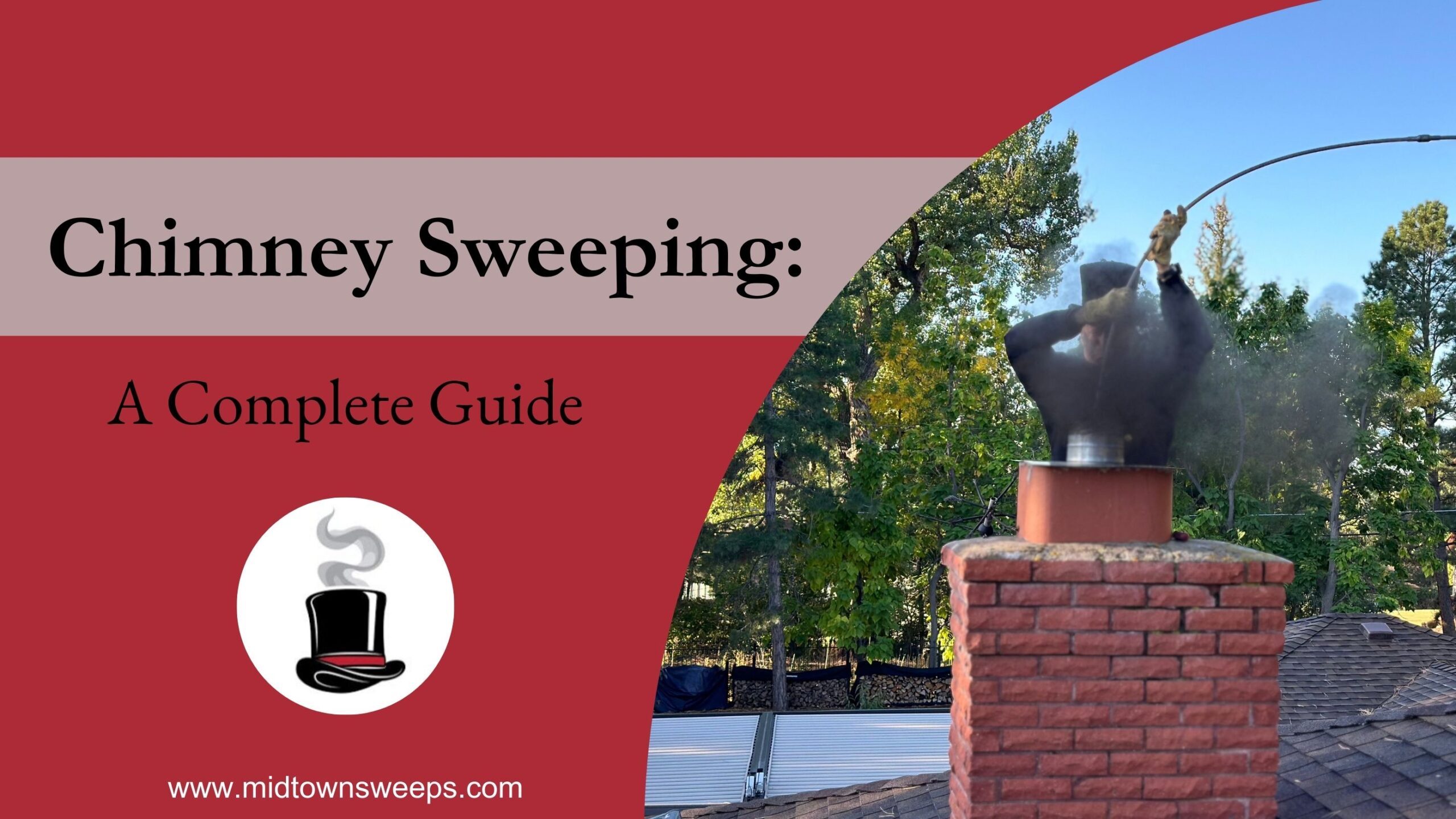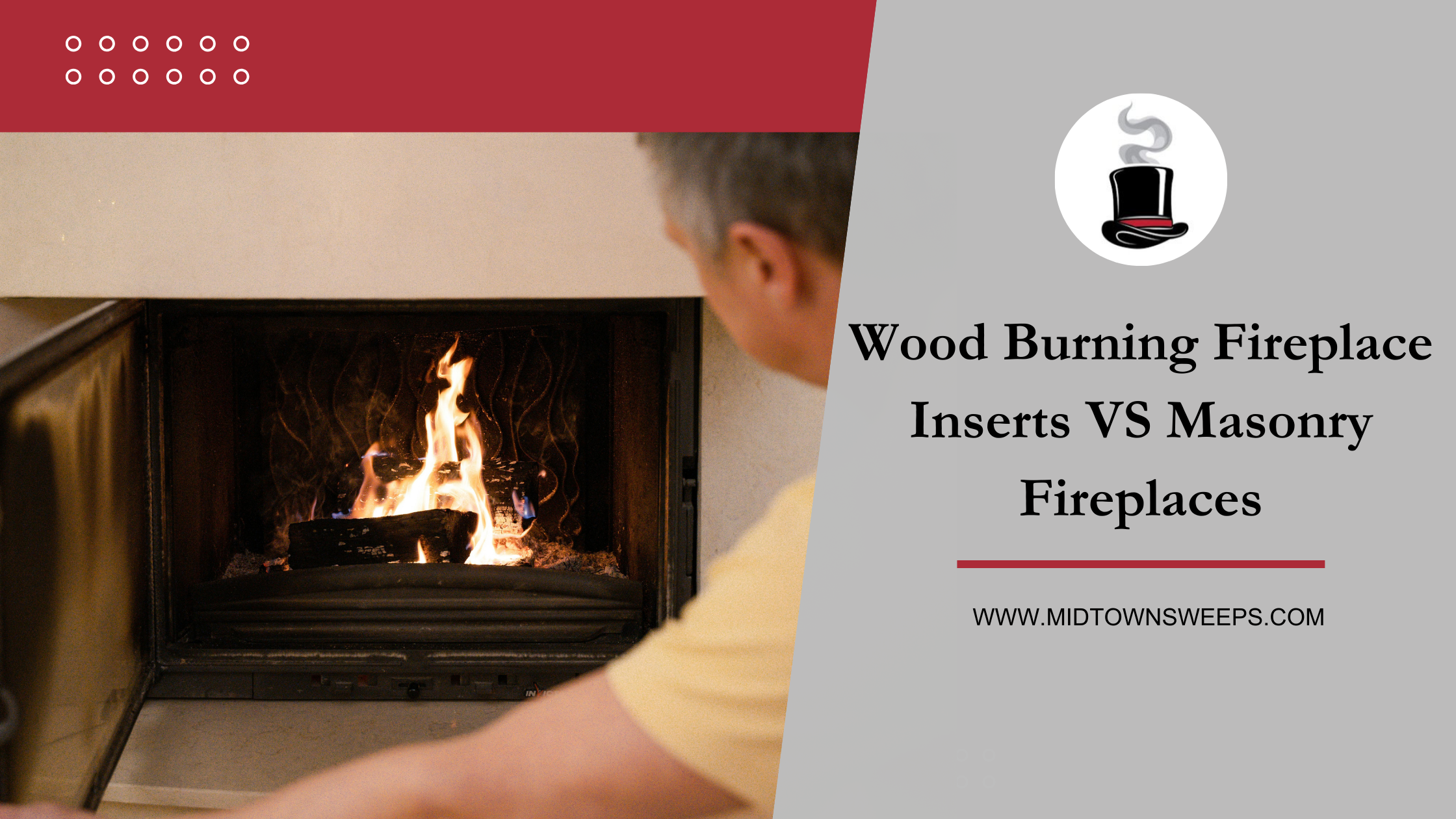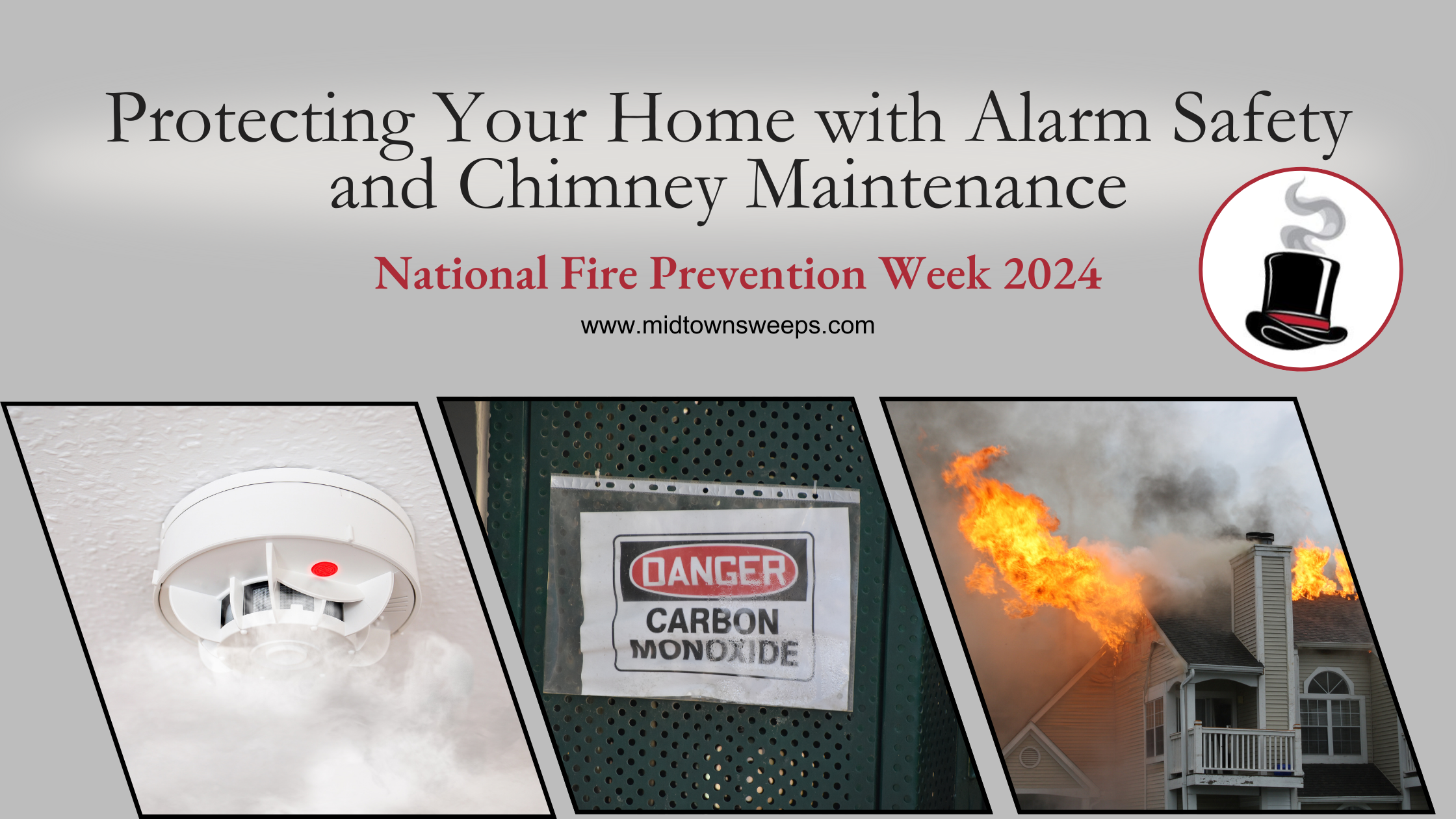Chimney Integrity Testing- Will it work this time to protect U.S. Residential Chimneys?
A new chimney sweep inspection tool from Europe was released in the United States chimney inspection market last month.
Dave Sudworth from Mr Soot Training Center near Manchester, England came to Denver, Colorado in June 2024 to model the proper use of this groundbreaking new chimney integrity testing device. The forum was at the Midtown Chimney Sweeps 2024 Annual Convention in June 2024 with over 25 select chimney sweep professionals in attendance.

History
The founder of a nationwide chimney sweeping franchise, Byron Schramm, traveled to Germany, Austria, Italy, France, and England in 2023 and 2024 on a 7 month search for the silver bullet to properly inspect chimneys. He met with 6th generation chimney sweeps in the heart of Europe, and found the storied history of chimney sweeping dating back to the first licensed chimney sweep in Vienna, Austria: Hans von Mailnath. Most astounding was the date of the chimney sweep’s license, 1512. If you want to know how to properly inspect a chimney, the heart of Europe is the place to go, and German engineering is the thing to trust.
In 2022 Byron began seeking a better method, an objective technique, for checking the integrity of chimneys. A handy person by nature and training, Byron set out to create a pressure testing method for chimneys in his garage. After months of work, and little to show for it, an internet search landed him on a website indicating that this technique of testing chimneys had already been invented, and was being used daily in over 5 European countries! Excited by this discovery, Byron launched into a multi-year journey to bring this technique to the USA for himself and his team to better inspect chimneys for their customers.
Junk or Genius? US Chimney Sweep leaders tested it in 1997 with this opinion: Not Good
Around 1997 a handful of US chimney sweep professionals from the National Chimney Sweep Guild and Chimney Safety Institute of America were introduced to the concept of chimney integrity testing by attending the annual ESCHFOE (European Chimney Sweep Federation) in Europe. Upon a verbal interview of two of these attendees, Byron Schramm heard their first-hand report. These leaders did not like the device because it gave a “pass” to nearly every chimney they attempted to test here in the USA. They abandoned the European technique and chimney integrity testing has been silent ever since in the USA.
After numerous dissatisfactory results, the efforts were abandoned in favor of a camera-on-a-stick method of visually inspecting America’s chimneys. Ever since then, American chimney sweeps have precisely one method, and only one method, of inspecting a chimney- a camera on a stick- and no method of testing a chimney.
A biology major in college, Byron had been trained in the proper use of the scientific method, and was curious to run his own tests.
Byron has hopes that his team will reach a different conclusion, and has some preliminary evidence to back it up. First, Byron’s approach is different from his predecessors 27 years earlier- he went straight to the German headquarters of Bad Wunnenberg, Germany, and spent 2 days with the inventor Elmar, and other employees learning just how the device is intended to be used and deployed. Secondly, he spent time in the field with a well-respected German chimney sweep and professor in Stuttgart, Germany sweeping chimneys and investigating the tool. Thirdly, Byron traveled to England where he was trained on the device in both London and Wigan, England by two separate HETAS approved trainers. Fourthly, Byron went to Belgium and witnessed the device used in the pressure testing of newly-fabricated wood burning appliances at a large wood stove manufacturing facility.
Now back home in Denver, Colorado, Byron is putting the device to work on American clay flue tiles and in situ masonry fireplaces and UL Listed stainless steel chimneys and UL Listed stainless steel chimney liners.

Chimney Integrity Testing
“Integrity” (noun): The quality or state of being complete or undivided : COMPLETENESS.
Perhaps, very soon, American chimney sweeps will show up at client’s homes with an impressive piece of equipment, temporarily sealing the top and bottom of a fireplace system and checking its integrity. As investigations of proper use and deployment continue, the following suggested edit was submitted to the National Fire Protection Association document 211 review committee electronically in June 2024 by Byron Schramm.
NFPA 211 15.0 Suggested Edit
Chimney Integrity Testing or Chimney Air-Tightness Testing
When tested in accordance with the appropriate standardized test the leakage rate in litres/seconds per square meters of flue surface area of chimneys or of the flue liners or connecting flue pipes with joints before and after exposure to heat, shall not exceed the values given in table 15.001.
This shall be an optional and additional method of testing chimneys.
Reasons this should be considered for adoption in the USA: The Chimney Sweep’s Dilemma
There is no way to objectively guarantee a masonry or factory-built chimney is free of faults leading to a structure fire. Nonetheless, it is the core function of a chimney sweep to try and determine the fitness for continued service of a chimney. Chimney sweeps need all the tools they can get to try and do their core function. The consequences of a poor inspection are clear as evidenced by the annual monoxide poisonings, death count and structure fire property loss caused annually by chimneys and fireplaces. Bad things happen when chimneys leaks exhaust gasses where they should not leak.
NOTE: We should not shrug our shoulders and say, “fireplaces are inherently dangerous”. Rather, we observe fireplaces are dangerous when they are defective, and continue to be used! Possible cause is the chimney sweep is not catching defects on the inspection, and the customer is not being adequately warned.
This is not an article justifying mass decommissioning of fireplaces in USA. Rather, It is an article finding new and better ways to find problems in a flue and bring it to the light so the contractor and customer can act in an informed manner and repair the issue before it is problem. This is an exciting pro-active position to get professional home inspectors and chimneys sweeps a better diagnostic tool.
The chimney sweep in the USA has traditionally has 3 tools to do this job:
1) Smoke test (subjective results, relies upon visual leakage of smoke, compressed gaps don’t leak, inconclusive results). However, a smoke test can show us proper draft if flue is preheated, and it can show us leakage if done under pressure (Type 1 smoke test)
2) Camera inspection (subjective results, open to human error of missing an issue visually, and technical lighting issues). Benefits are visual recognition and immediate first hand knowledge of a gap or crack in a masonry system, or disconnection in a factory-built system.
3) Visual inspection (subjective results, open to visual human error, restricted access and viewability). Benefits are visual recognition and immediate first hand knowledge of a gap or crack.
There is another test that could help chimney sweeps in the USA determine if a chimney is leaking exhaust gasses or not, it is called a Chimney Integrity Test.
Will the NFPA 211 technical council please consider approving the leakage rates submitted herein, based on the 20 year time-tested European standard so that this method may be used in the USA?


Chimney Integrity Testing Background
The European standard EN1443 and the UK Document J has addressed the issue of human error on chimney camera inspections by recognizing an additional method of inspecting flues: chimney integrity testing. The NFPA 211, the USA document guiding solid-fuel appliance installation and maintenance, also allows for “other means” of inspection other than simply a camera-on-a-stick approach.
Chimney integrity testing is the only objective machine-based method of testing the air-tightness of a passageway. The method and the associated device are used daily across more than 5 European nations, and the reliability and suitability for testing wood fired fireplaces and gas furnace flues is verified by its continued use.
Chimney sweeps in Switzerland, Germany Austria, Italy, France and the UK all have this additional tool for inspecting their chimneys.
There are two German made devices to choose from, the Wohler DP600 or the Ress DP5, each made by a different company and sold at different prices, but which are pre-programmed with the European Standard.
These devices function as follows: the sweep installs a foam plug in the top of the chimney, and a foam block in the bottom of the chimney, and connects the device to a probe which is inserted through one of the foam blocks. The device is powered on, and it applies a light pressure (P for positive pressure test) or pulls a slight vacuum (N for negative pressure test). After it establishes equilibrium at that pressure, it then begins an automated 10 second test measuring the leakage rate. The machine powers down and prompts the technician to enter the cubic feet of the cavity tested. The device then displays PASS or FAIL on the screen. Optionally the technician may use a provided hand-held printer to print the receipt with the customer’s address and the sweep company’s name on it, along with the pass/fail chimney inspection results.
From the Manufacturer:
The Wöhler DP 600 Leakage Tester controls the tightness of all exhaust gas systems listed in EN 1443 by measuring the air flow required to maintain the test pressure level. The instrument is also suitable for the 4 Pa test (standard method and enhanced method) according to the DVGW (German Association of Gas and Water Engineers) sheet G 625 (2009). The 4 Pa Pressure Test is a simple control of the underpressure limit 4 Pa which informs whether there is sufficient combustion air supply or not. No auxiliary measuring instrument will be necessary. The device is suitable to control the tightness of fireplaces. The DP 600 measurement is based on the approval principles for non-room sealed heating appliances, published by the German Institute for Building Technology (Deutsches Institut für Bautechnik) in July 2002.
Chimney Integrity Testing methodology Deployment in the United States
The deployment of the device is being carefully monitored by the manufacturer Wohler USA because of the potential for mis-diagnosis by untrained users. Therefore a basic online training course must be completed prior to sale and deployment of the device. This will ensure that users of the DP600 will correctly use the device and just as importantly, correctly interpret the results.
So, what’s next for Chimney Sweeps?
Chimney integrity testing is being revisited as an improved method of testing US chimneys.
Byron Schramm and the team at Midtown Chimney Sweeps is actively and currently testing the device on various chimneys in the USA.
Dave Sudworth of Mr Soot Training Centre in Wigan, England came to the USA in June 2024 to demonstrate proper use of the technology to a select group of US chimney sweeps.
The new technology is being field tested to determine its suitability for chimney integrity testing on American chimneys.
This is a proactive step to give chimney sweeps in the USA a better tool to catch issues before claims arise.
The device is satisfactorily used every day in numerous European nations.
The future is possibly getting brighter for chimney and fireplace and stove owners to get a more objective method of chimney inspection.












